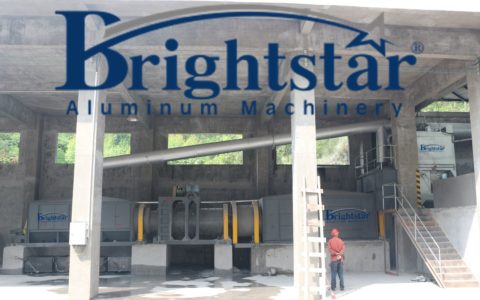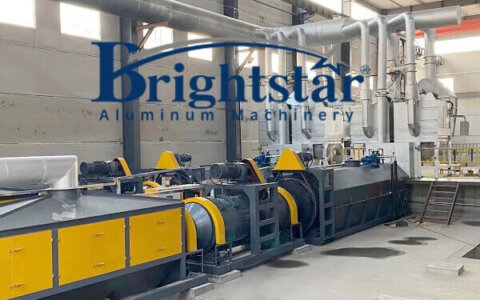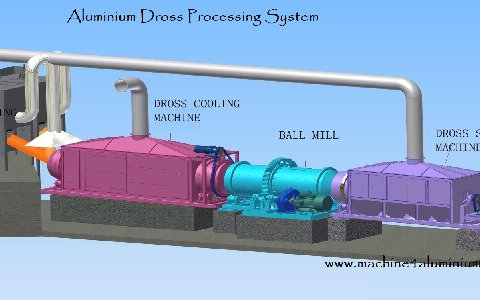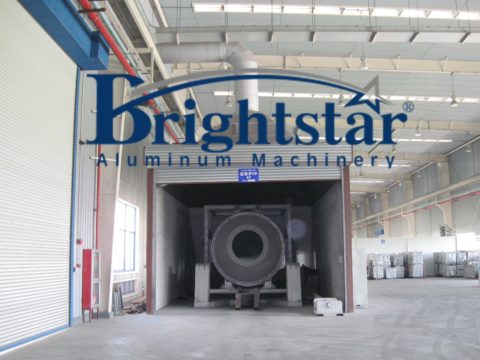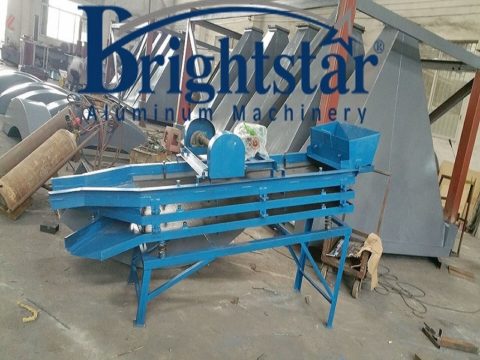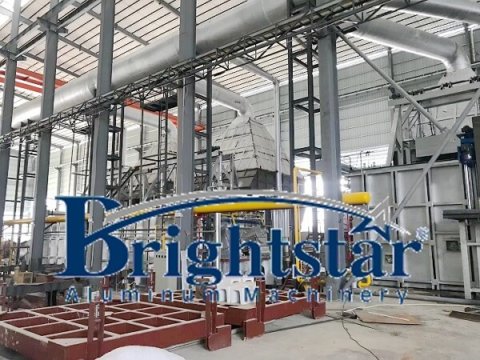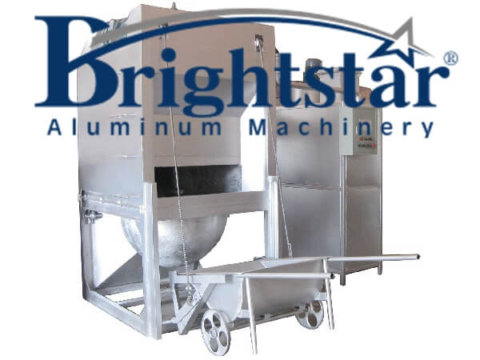
Hot aluminium dross recycling system
Hot aluminium dross recycling system
Hot aluminium dross recycling system
A Hot Aluminum Dross Recycling System is a specialized setup designed to efficiently and safely recycle aluminum dross directly from the molten state, eliminating the need for pre-cooling and additional handling.
This is a much faster and more energy-efficient approach compared to traditional methods involving cooling and processing cold dross.
Hot aluminium dross recycling system includes aluminium dross processing machine, aluminium dross cooling machine, ball mill and sieving machine.
Extract aluminium metal from hot dross, cool the hot dross to normal temperature, crush and grind with a ball mill and sieve the dross in different grades, coarse dross can be recycled, medium dross can be used in the dross processing machine, fine dross will be bagged for sale.
The completed system and total solution for hot aluminium dross recycling.
An aluminium dross processing system is a specialized setup designed to recover valuable aluminium metal from the dross generated during the melting and casting processes in the aluminium industry.
Dross is a mixture of metallic aluminium and non-metallic impurities like oxides and salts, forming a solid mass that floats on the surface of molten aluminium.
Recovering this metal from dross is crucial for environmental sustainability, resource efficiency, and cost savings.
Here’s a breakdown of the main machines involved in an aluminium dross processing system and their functions:
Dross processing machine (DPM), also known as aluminium dross machine and aluminium dross separator, it is the base of the aluminium dross processing system.
Function: Mechanically stirring and processing hot dross to maximize metal separation. It can extract more than 90% aluminium from hot aluminium dross.
Dross cooling machine can cool the hot dross to normal temperature in a short time.
Function: Rapid cooling is essential for further processing and handling. Typically, a circulating water cooling system is used to effectively cool the dross, making it easier to handle and process further.
Ball mill and sieving machine
Function: The ball mill is responsible for crushing and grinding the cooled dross into smaller particles.
This increases the surface area of the dross, making it easier to separate the aluminum from the impurities during the next stage.
Process: The ball mill is a cylindrical chamber filled with steel balls of varying sizes. As the chamber rotates, the balls tumble and crush the dross against the inner lining and against each other.
The size of the balls and the speed of rotation can be adjusted to achieve the desired particle size.
Dross sieving machine
Function: After the dross is ground in the ball mill, it is passed through a series of vibrating screens to separate it into different size fractions.
The screens have mesh sizes that allow particles of different sizes to pass through.
Separation: Typically, there are three or four screens with varying mesh sizes.
The largest screen allows the largest aluminum particles to pass through, while the smallest screen allows only the finest powder to pass through.
The intermediate screens capture particles of different sizes in between.
Benefits: Separating the dross into different sizes facilitates further processing and utilization.
Larger particles can be directly remelted, while smaller particles may be used for other applications such as casting alloys or in the construction industry.
the aluminum dross ball mill and screening machine work together to efficiently process aluminum dross and recover valuable metal.
By crushing and grinding the dross, and then separating it into different sizes, the system maximizes the recovery of aluminum while minimizing waste.
Benefits of Aluminium Dross Processing Systems:
Increased aluminium recovery: Advanced systems can achieve up to 90% aluminium recovery from dross, significantly reducing waste and maximizing resource utilization.
Reduced environmental impact: By recovering aluminium from dross, the need for virgin aluminium production decreases, leading to lower energy consumption and greenhouse gas emissions.
Improved operational efficiency: Automated systems minimize manual labor and downtime, leading to increased production efficiency and cost savings.
Enhanced product quality: Recovered aluminium from dross can be used in various applications, often with minimal impact on product quality.
Overall, aluminium dross processing systems are a valuable investment for the aluminium industry.
They offer a sustainable and efficient way to recover valuable metals from waste, reduce environmental impact, and improve operational efficiency.
Working process
The dross skimming from aluminium melting furnace or holding furnace→Forklift dross trolley or manual dross trolley→aluminium dross processing machine(more than 90% aluminium will be extracted from the dross)→aluminium dross cooling machine(cool the hot dross to normal temperature) →ball mill(crushing and grinding) →sieving machine( coarse, medium and fine dross, coarse dross will be recycled in the melting).
One completed cycle for aluminium dross recycling.
Function:
The system primarily accomplishes two main functions:
Aluminum Separation: This involves extracting the valuable aluminum metal from the dross mixture, which typically contains aluminum, oxides, salts, and other impurities. This is achieved through various specialized equipment within the system.
Dross Processing and Utilization: The remaining non-aluminum dross is processed and prepared for further use or disposal. This may involve crushing, sieving, and/or other treatment methods depending on the intended application.
Key Features:
High-speed Aluminum Dross Processor: This machine is the heart of the system, utilizing mechanical force and sometimes chemical techniques to efficiently separate the aluminum metal from the molten dross. Advanced designs can achieve recovery rates exceeding 90%.
Dross Cooling machine: after the extraction of aluminum from the hot dross, utilize a rapid cooling system to solidify the dross for easier handling and storage, avoid the burning loss and increase the aluminum recovery rate.
Aluminum Dross Ball Mill and Sieving System: Ball mill for dross crushing and grinding, screens categorize the cooled and crushed dross into different sizes based on the remaining aluminum content and particle size. This allows for targeted reuse or disposal of the dross fractions.
Integrated Control System: The entire system is controlled and monitored by a central system for safe and efficient operation, optimizing performance and minimizing processing errors.
Advantages of Hot Aluminum Dross Recycling Systems:
Increased Efficiency: Processing hot dross eliminates the need for cooling and additional handling, significantly reducing time and energy consumption compared to traditional methods.
Improved Aluminum Recovery: High-performance separation techniques achieve higher recovery rates, maximizing resource utilization and minimizing waste.
Reduced Environmental Impact: Lower energy consumption and less handling translate to decreased greenhouse gas emissions and lower overall environmental footprint.
Enhanced Safety: Automated operation and enclosed systems minimize exposure to hot molten materials and potential accidents.
Cost Savings: Increased efficiency, improved recovery, and reduced environmental compliance costs can lead to significant long-term savings.
Applications:
Aluminum Smelting and Casting Workshops
Dross Recycling Facilities
Secondary Aluminum Production Plants
Overall, Hot Aluminum Dross Recycling Systems offer a robust and sustainable solution for the aluminum industry.
They contribute to increased efficiency, improved resource recovery, and reduced environmental impact, while also offering economic benefits through cost savings and enhanced production capacity.
System description
The first step, extract aluminium from the hot dross generated from aluminium melting furnace or holding furnace, more than 90% recovery rate
The second step, cool the hot dross(700-900℃) after the processing to normal temperature within 10-15 minutes, avoid burning loss and oxidation, improve the recovery rate
The third step, crushing and grinding in the ball mill
The fourth step, sieving in different grades, coarse dross will be recycled in the melting furnace, medium dross will be used in the dross processing machine for dross cooling, and fine dross will be bagged for sale.
Technical features
Automatic and save labor, simple operation and less maintenance;
Improve aluminum recovery rate, avoid burning loss and oxidation;
Minimize the smoke and dust problem, good for the workers’ health and meet the government’s request for environment friendly;
Long time running without failure, high efficiency and energy saving;
Better economic benefits and social benefits and environmental benefits with our system.
Technical data
Overall size 10-17 meters up to project
Total power: 40-50 KW
Water consumption for cooling 10-30m3/H
Processing quantity: 1-3 tons per hour up to the project
We will design, and manufacture based on your production situation and from design, manufacturing, and delivery to installation, commissioning, training, technical support and service, one-stop service and we do more than you expected.
Contact us now to obtain a reliable no-obligation quote on your hot aluminium dross recycling solution.
The Necessity of Hot Aluminum Dross Recycling Systems: Efficiency, Sustainability, and Profitability
While not an absolute necessity in every case, Hot Aluminum Dross Recycling Systems offer significant advantages that make them increasingly desirable for aluminum dross processing.
Here’s a breakdown of the key reasons why you might consider implementing one:
Increased Efficiency:
Time savings: Processing hot dross eliminates the need for cooling and pre-handling, potentially reducing lead times by several hours. This translates to faster processing cycles and increased production capacity.
Energy savings: Hot dross processing utilizes the residual heat within the dross, significantly reducing the energy required for melting and separation, leading to lower operational costs and environmental benefits.
Reduced handling: Eliminating the need for cooling and additional handling steps minimizes labor requirements and equipment wear and tear.
Improved Aluminum Recovery:
Advanced separation techniques: Hot dross systems often employ specialized equipment that can achieve higher aluminum recovery rates, exceeding 90% in some cases, compared to traditional cold dross processing methods.
Reduced oxidation losses: Processing hot dross minimizes the time for oxidation to occur, preventing valuable aluminum from being lost and contributing to higher metal yield.
Environmental Benefits:
Lower energy consumption: Reduced energy requirements for processing translate to lower greenhouse gas emissions, contributing to a more sustainable aluminum industry.
Reduced waste generation: Higher aluminum recovery minimizes the amount of dross landfilled, conserving resources and reducing environmental pollution.
Economic Advantages:
Cost savings: Increased efficiency, improved recovery, and lower energy consumption result in significant cost savings over time.
Boosted profitability: Higher production capacity and increased aluminum yield can lead to enhanced revenue and profitability for aluminum producers and recyclers.
Improved market competitiveness: Utilizing a sustainable and efficient dross processing technology can enhance your overall image and competitiveness within the aluminum industry.
However, the necessity of a Hot Aluminum Dross Recycling System might depend on some factors:
Dross volume and composition: Processing large volumes of dross or dross with high aluminum content can justify the initial investment in the system.
Current processing infrastructure: If your existing setup already involves efficient cold dross processing, the advantages of switching might be less significant.
Capital investment and operational costs: Hot dross systems require an initial investment and ongoing operational costs. Ensure a thorough cost-benefit analysis to determine its economic viability.
In conclusion, Hot Aluminum Dross Recycling Systems offer compelling advantages in terms of efficiency, sustainability, and economic benefits.
While not universally necessary, they represent a powerful tool for optimizing aluminum dross processing, particularly for operations dealing with large volumes or aiming for maximum recovery and environmental consciousness.
